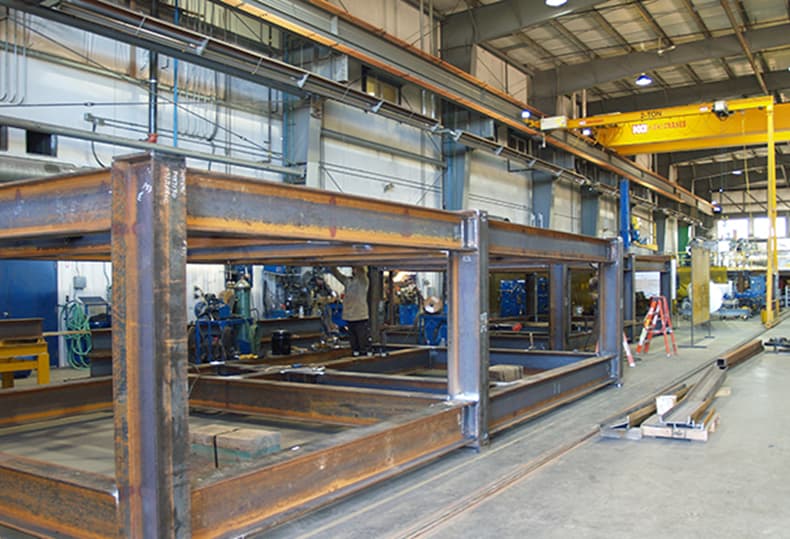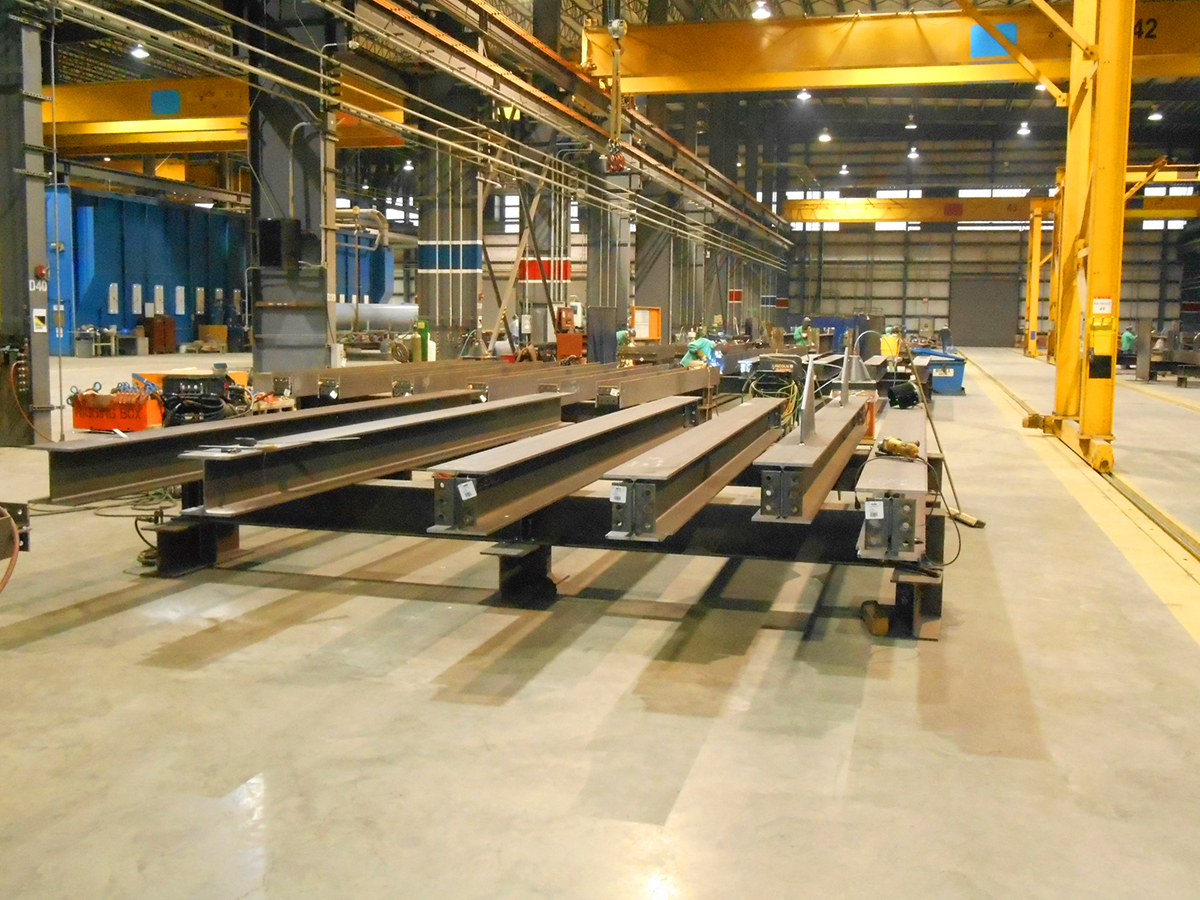Cutting-edge Trends in Steel Fabrication: Enhancing Resilience and Accuracy
In the world of steel construction, the quest of sturdiness and accuracy has actually caused a wave of ingenious trends that are reshaping the industry. From developments in welding modern technologies to the combination of robotic automation in fabrication procedures, the landscape of steel manufacturing is evolving quickly. High-strength alloy development, coupled with the usage of 3D modeling and simulation software, is pushing the boundaries of what is possible in terms of structural integrity and accuracy. The expanding focus on lasting techniques in steel production is not only driving performance yet likewise promoting a much more eco aware approach to construction. These trends are not simply forming the here and now but likewise preparing for the future of steel construction, promising additional improvements in toughness and precision.
Advanced Welding Technologies
In the realm of steel manufacture, the fostering of advanced welding modern technologies has considerably transformed the sector's strategy to attaining exceptional high quality and precision in structural welds. Advanced welding innovations, such as laser beam welding and friction stir welding, have actually emerged as game-changers in the area. By leveraging these sophisticated welding methods, steel producers can boost the resilience, toughness, and precision of their structural welds, meeting the increasingly demanding requirements of modern building projects.
Robot Automation in Manufacture
Accepting robotic automation has ended up being a foundation of contemporary steel manufacture methods, improving procedures and enhancing efficiency throughout the market. Robots are transforming the way steel parts are produced, supplying unrivaled accuracy and speed while minimizing human mistake. These automated systems can deal with repetitive tasks with constant precision, causing greater top quality end products.
One secret advantage of robotic automation in steel fabrication is the capacity to function around the clock without fatigue, considerably increasing production output. This constant procedure lessens downtime and accelerates task timelines, inevitably conserving prices for makers. In addition, robotics can be programmed to do elaborate tasks that may be difficult or harmful for human workers, boosting safety in the workplace.
Moreover, robot automation enables seamless assimilation with other digital modern technologies, such as computer-aided layout (CAD) software and Net of Points (IoT) systems (steel fixing). This interconnected method improves communication in between various phases of fabrication, enhancing operations and ensuring real-time monitoring and control. As the steel manufacture industry continues to progress, robot automation stands out as a transformative force driving efficiency and precision in producing procedures

High-Strength Alloy Development
The development of high-strength alloy development in steel fabrication is reshaping the industry's approach to enhancing material resilience and performance. High-strength alloys are engineered to show superior mechanical residential or commercial properties, such as enhanced tensile strength, toughness, and deterioration resistance contrasted to typical steel qualities. By integrating these sophisticated alloys into fabrication procedures, makers can create elements that withstand greater stress and anxiety degrees and extreme environments, leading to even more long lasting and trustworthy final product.
One trick benefit of high-strength alloy development is the capacity to minimize material density without jeopardizing structural honesty. This not only results in lighter-weight elements but additionally adds to cost financial savings and enhanced performance in construction and assembly procedures. The boosted strength-to-weight ratio of these alloys permits for the design and building and construction of frameworks with higher load-bearing capabilities while reducing total weight.
3D Modeling and Simulation Software
Innovations in steel construction procedures have been substantially moved by the assimilation of cutting-edge 3D modeling and simulation software application devices. These tools enable makers to create in-depth digital models of their jobs, enabling them to imagine the end product with precision before any kind of physical work begins. By replicating numerous tension aspects, ecological problems, and structural tons, producers can maximize layouts for enhanced toughness and efficiency. In addition, 3D modeling and simulation software improve the production procedure by recognizing possible concerns early on, decreasing the requirement for expensive rework and lessening product waste.

Sustainable Practices in Steel Manufacturing
Incorporating lasting practices right into steel production processes is essential for lessening environmental effect and ensuring long-lasting source availability. One crucial sustainable method is the fostering of energy-efficient technologies to minimize greenhouse gas exhausts during the steel manufacturing procedure. This includes utilizing eco-friendly energy sources, such as solar or wind power, to power steel plants and applying energy-efficient equipment to optimize power use.
An additional important facet of lasting steel production is the responsible sourcing of basic materials. This entails ensuring that the iron ore and other sources utilized in steelmaking are gotten from ethical and eco-friendly sources. By promoting transparency in the supply chain and adhering to stringent ecological criteria, steel suppliers can minimize the negative impacts of resource extraction on regional environments and areas.

Verdict
To conclude, the innovative trends in steel manufacture such as sophisticated welding modern technologies, robotic automation, high-strength alloy growth, 3D modeling and simulation software, and lasting methods are improving the longevity and precision of steel products. These developments are transforming the steel construction market by enhancing sustainability, high quality, and performance. It is clear that the future of steel manufacture lies in embracing these advanced innovations to fulfill the demands of modern construction and manufacturing industries.
In the realm of steel manufacture, the search of sturdiness and precision has led to a wave of cutting-edge patterns that are reshaping the industry.In the world of steel fabrication, the adoption of advanced welding modern technologies has actually substantially changed the market's approach to attaining exceptional top quality and precision in architectural welds. As the steel manufacture sector continues to advance, robotic automation stands read this post here out as a transformative pressure driving performance and precision in making processes.
Moreover, recycling and reusing steel scrap and waste products play a significant role in improving the sustainability of steel production. steel fabrication melbourne.In conclusion, the innovative patterns in steel manufacture such as sophisticated welding technologies, robot automation, high-strength alloy advancement, 3D modeling and simulation software program, and lasting their website techniques are boosting the resilience and precision of steel products